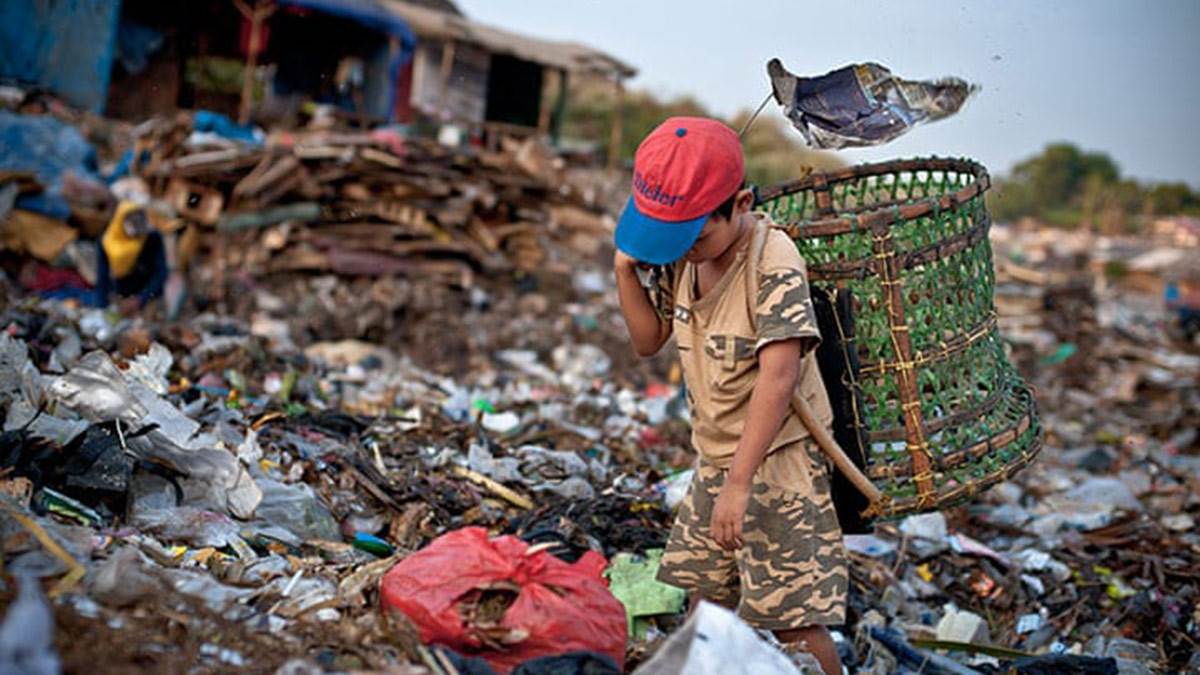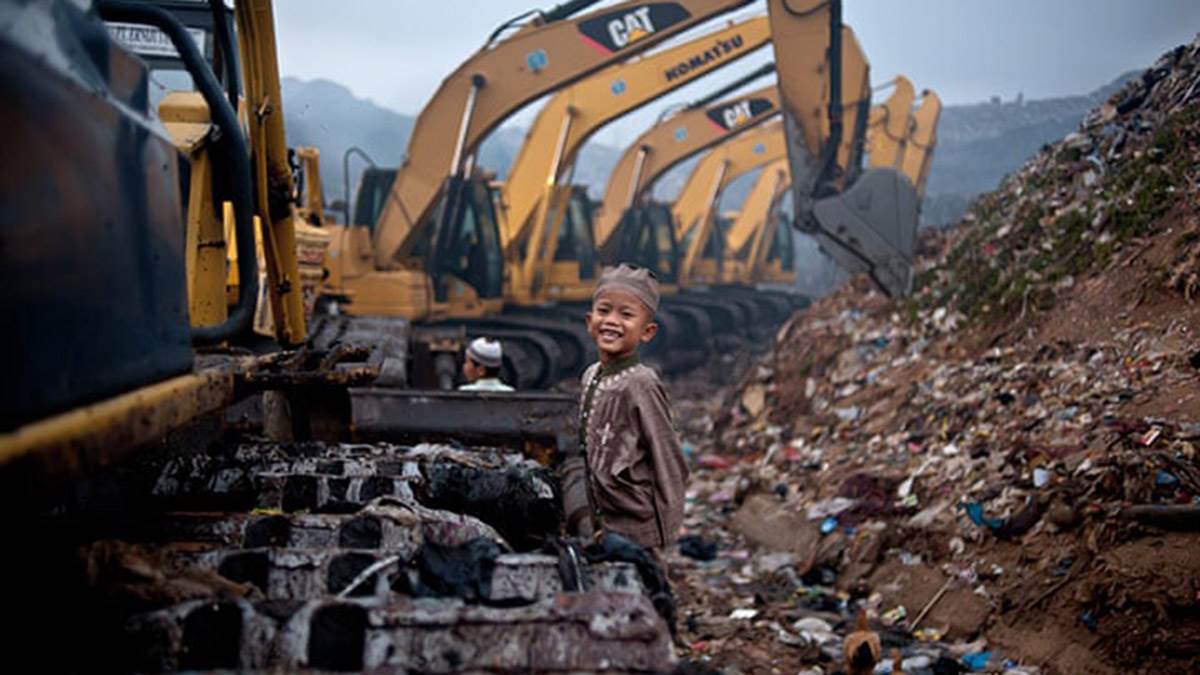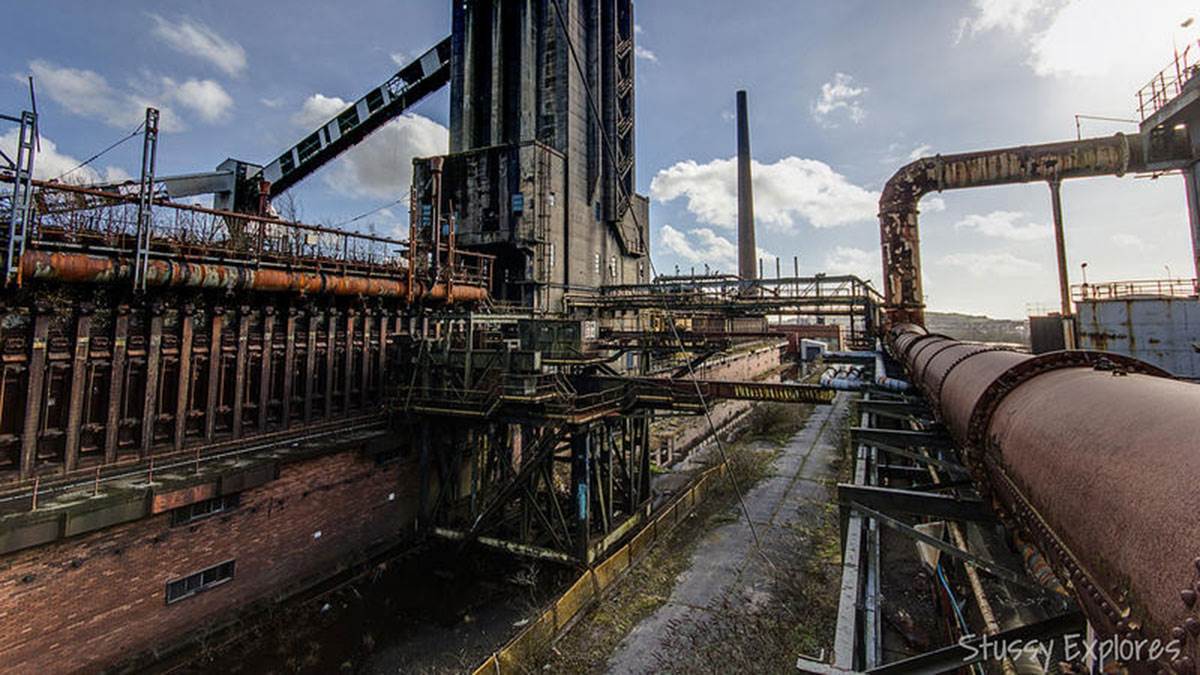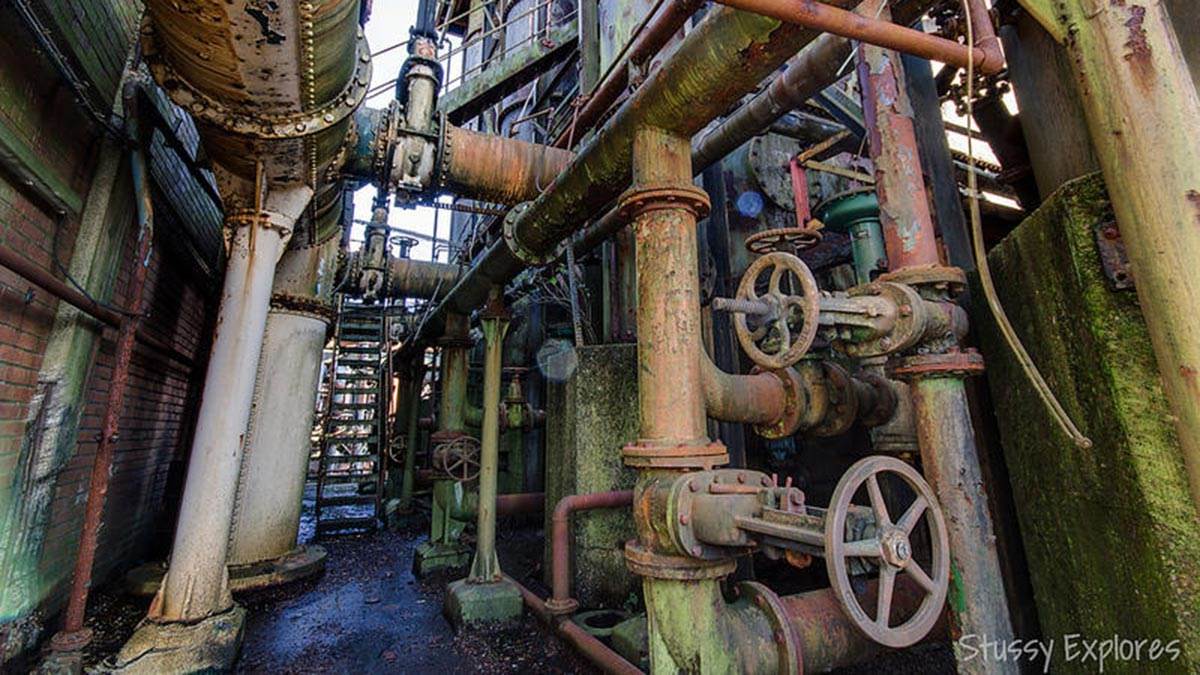'A world of walls': How a ham sandwich led to a story of outsiders and breaking down barriers
Published on: 5 Mawrth 2019 Author: Darren Simpson
Darren Simpson's new book Scavengers is all about a child living in an abandoned coal plant - but wondering if there is more out there in the world.
He tells us how watching someone eat a ham sandwich led him to write the story (and go on a pretty incredible journey along the way)...

A young boy scavenging for a living at Bantar Gebang, Indonesia (photo by Javad Tizmaghz for The Guardian)
What do you get when you cross a ham sandwich with a world of walls, an abandoned coal-processing plant, several thousand tons of rubbish and a dash of parental doubt? Apparently you get Scavengers, my first novel for younger readers. And hopefully something more, but we'll come to that later.
All of these ingredients played their part in the development of Scavengers, beginning with the aforementioned lunchtime staple. Admittedly, a ham sandwich isn't the most glamorous source of inspiration for a novel, but I've always believed that even the most mundane things are packed with strange potential. Anyway, it wasn't so much the sandwich itself that inspired me, but rather the events it triggered.
Back in 2016, I was queuing at the Calverton Recycling Centre, just north-east of Nottingham, with a pile of garden waste crammed in the boot of the car. I was watching some workers natter among piles of dirty mattresses when one of them took a final bite of his sandwich and lobbed the crust into the woods that bordered the site. I saw the sandwich land, and was gently stunned by the sight of cats pouring out of the woods and from under skips to fight over the scraps.
The moment really struck me, and I found myself wondering about the recycling centre's wildlife. And suddenly it hit me: the image of a shaggy, filthy-bearded man, making his home in a cave of rubbish and sharing it with wild animals.
Discovering the real life landfill-dwellers

A boy looks for toys in the wheels of a bulldozer (photo by Javad Tizmaghz for The Guardian)
I'd been looking for an idea for my next manuscript, and knew this man would be key. I tried to figure out why he'd built a home in the rubbish. Had he been 'binned' by society? Or perhaps he'd decided to bin himself. But if so, why?
I looked for information about real people who live in rubbish, and found pictures that were as saddening as they were inspirational. The developing world is full of vast landfill sites with entire communities living on them, who stay alive by foraging for anything that can be sold.
The pictures had a huge impact on the novel. They offered vivid landscapes of trash to adapt and use, and encapsulated the terrible ways we produce and manage waste – something that became a theme in the book.
But the main impact came from the children. I found photos of kids as young as five not only toiling on dunes of rubbish, but also smiling, playing, and helping each other over hazardous, grimy crests. I was deeply moved, and still am to this day.
These pictures, these children, said so much about humanity, about community, about resilience – about the light that shines in the darkness we make for ourselves. That light, so small yet so profound, became one of the central things I wanted Scavengers to pass on.
I also knew instantly that the novel's bearded waste-dweller, Babagoo, would be raising a child. That child became Landfill, the story's feral, bare-footed protagonist.
Breaking down the barriers

The Cwm Coke Works in Wales, upon which the novel's primary setting, Hinterland, is based (photo by Stussy)
While tinkering with further ideas over 2016, a trend seemed to be sweeping across various nations. There was so much talk of borders, walls, keeping people out, looking after your own. Whether these things are good or bad is, of course, too intricate and subjective a matter to discuss here, and I won't pretend to be an authority on the political, economic or cultural phenomena involved.
But I know that it troubled me at the heart-and-gut level, and that it highlighted the complex intensities of our increasingly globalised world. Us/them. In/out. Open/closed. And all the grey areas between.
Before I knew it, the landscape of trash became a secondary setting for my novel, and I'd moved Babagoo and Landfill to an abandoned coal-processing plant overrun by animals, flora and decay – somewhere surrounded by tall walls smothered in thorny creepers and topped with shards of broken glass. Suddenly I had a perfect analogy to explore what was happening in the world, through the dynamics of a relationship between a child and his guardian.
The guardian, Babagoo, loathes and fears Outside and its cunning, monstrous Outsiders, and puts all of his energy into maintaining the integrity of Hinterland, their walled-off sanctuary and home.
His ward, Landfill, has never been Outside, but fears it too. He follows Babagoo's strict, numbered rules in order to keep himself, Hinterland and its animals safe. But as he gets older, he begins to have doubts about some of the things Babagoo says, and gradually yearns to see Outside for himself...
The child-parent element is a very personal one; it arose from my own experiences as father to my two sons. Every day as a parent is packed with dilemmas relating to how much you protect or expose your children. Too much of one or the other may not be ideal, depending on the situation.
It's difficult to find the right balance, and I felt that this dilemma correlated in interesting ways with novel's wider, more societal themes of in versus out, open versus closed. But in what way, exactly?
No easy answers

Nature slowly reclaims the Cwm Coke Works (photo by Stussy)
Which brings me back to the 'something more' I mentioned earlier – the something I hope you get when you cross a ham sandwich with a world of walls, an abandoned coal-processing plant, several thousand tons of rubbish and a dash of parental doubt.
You've probably noticed that I'm better at asking questions than answering them. But that's what I hope Scavengers will encourage in its readers: questions. I would never dream of telling children exactly what to think, but I would love to encourage them to think.
To resist, for example, the unfaltering inheritance of fear or hate. To take everything the media throws at them with a hefty chunk of salt.
To ponder and – like Landfill – to be brave enough to venture beyond the walls that have been built around them, so that they can see the world with their own eyes.






Add a comment